Abstract
The central issue of the Tuskegee Syphilis Experiment was property: property in the body and intellectual property. Once removed from the body, tissue and body fluids were not legally the property of the Tuskegee subjects. Consequently, there was not a direct relationship between a patient and research that used his sera. The Public Health Service (PHS) was free to exercise its property right in Tuskegee sera to develop serologic tests for syphilis with commercial potential. To camouflage the true meaning, the PHS made a distinction between direct clinical studies and indirect studies of tissue and body fluids. This deception caused all reviews to date to limit their examination to documents labeled by the PHS as directly related to the Tuskegee Syphilis Experiment. This excluded other information in the public domain. Despite the absence of a clinical protocol, this subterfuge led each to falsely conclude that the Tuskagee Syphilis Experiment was a clinical study. Based on publications of indirect research using sera and cerebrospinal fluid, this article conceives a very history of the Tuskagee Syphilis Experiment. Syphilis could only cultivate in living beings. As in slavery, the generative ability of the body made the Tuskegee subjects real property and gave untreated syphilis and the sera of the Tuskegee subjects immense commercial value. Published protocols exploited the Tuskegee Syphilis Experiment to invent and commercialize biotechnology for the applied science of syphilis serology.
Full text
PDF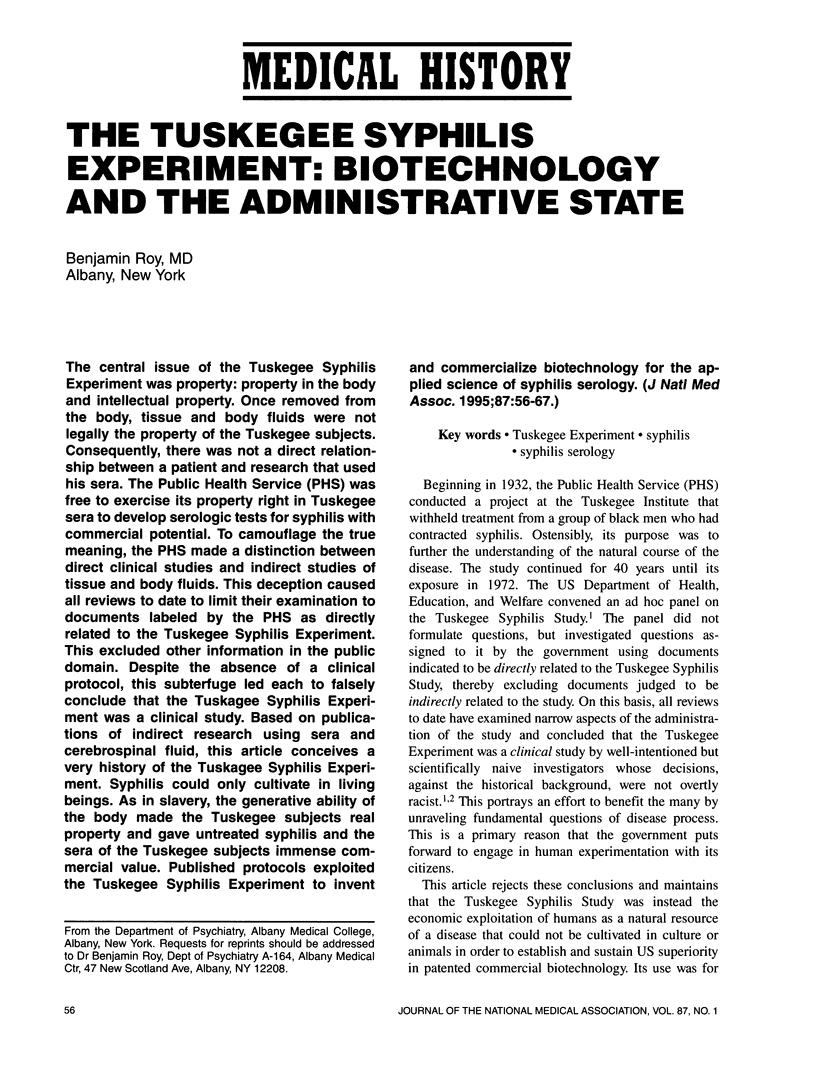
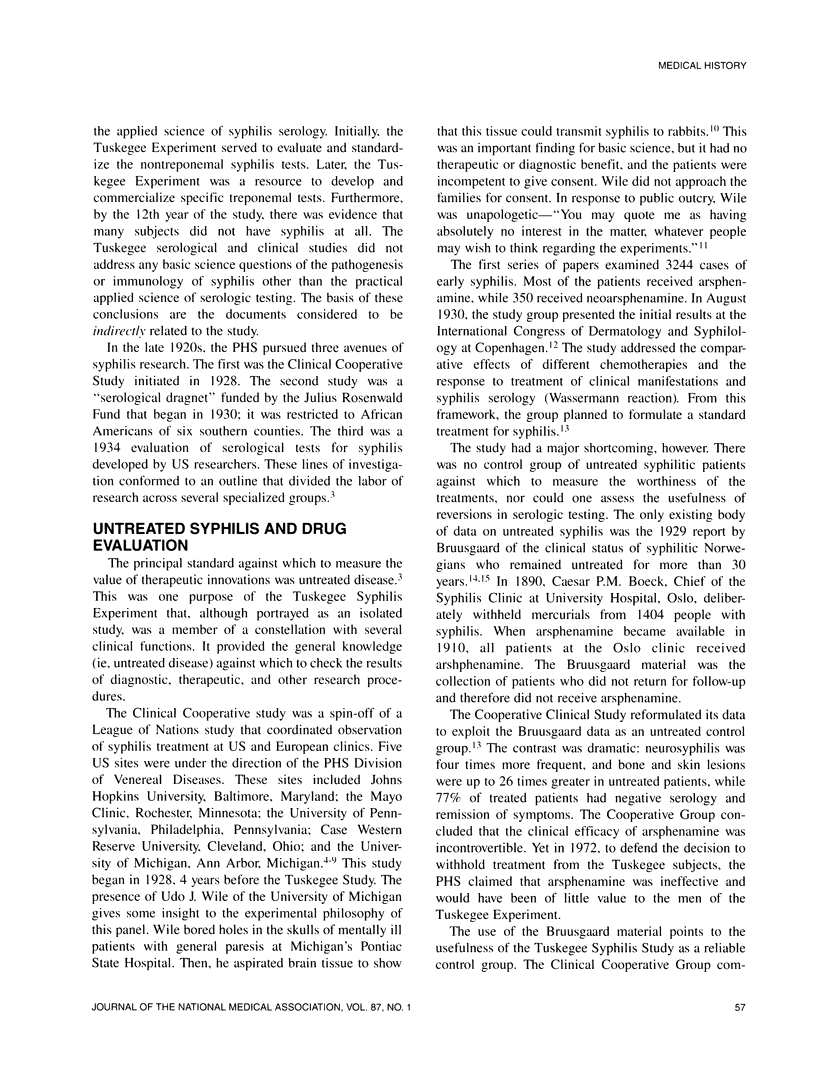
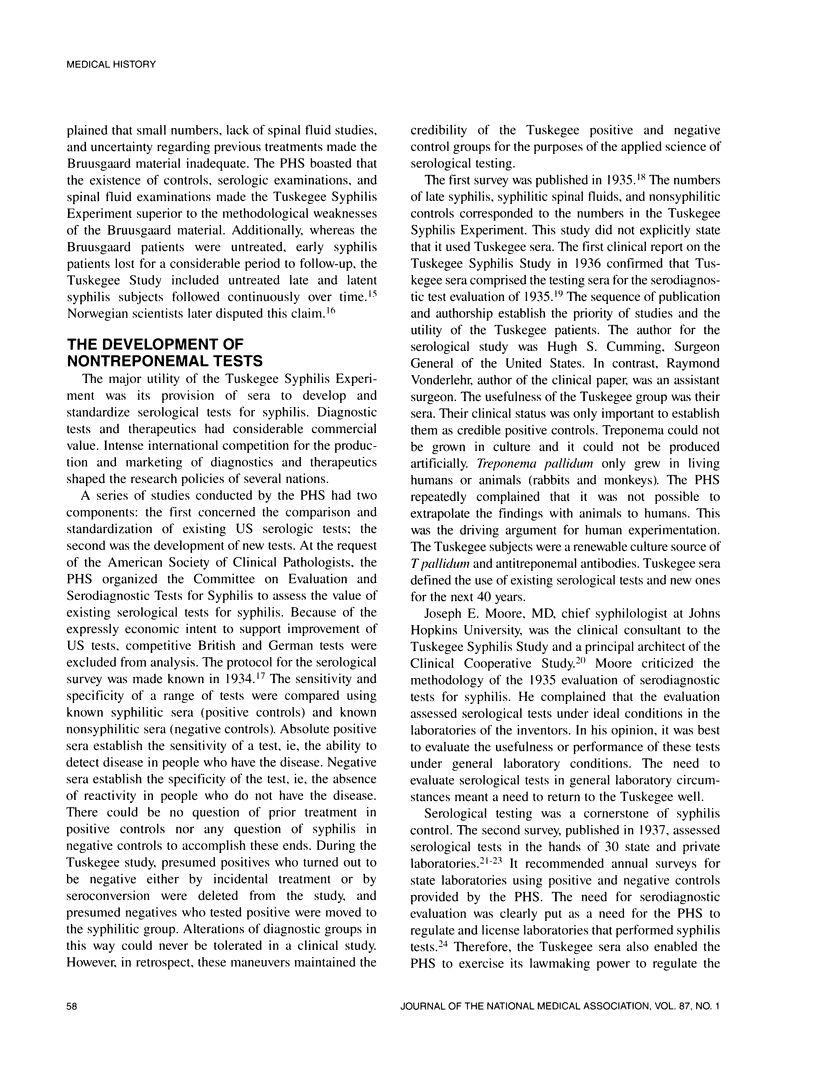
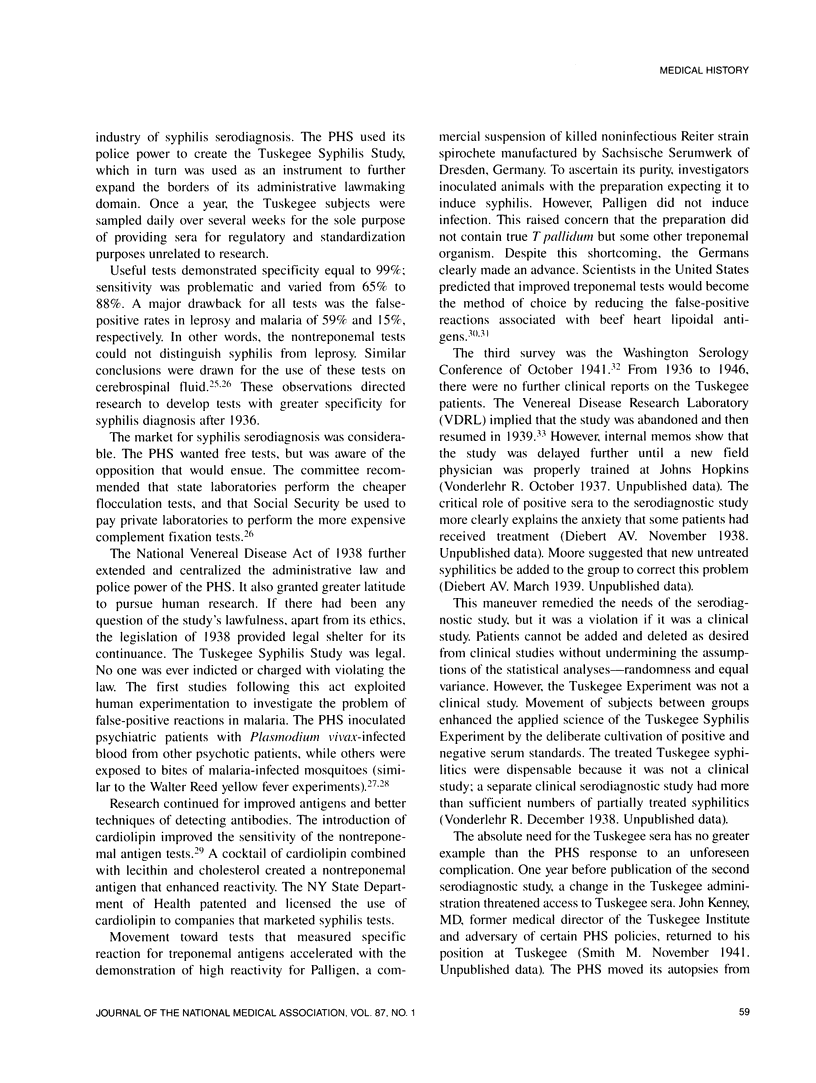
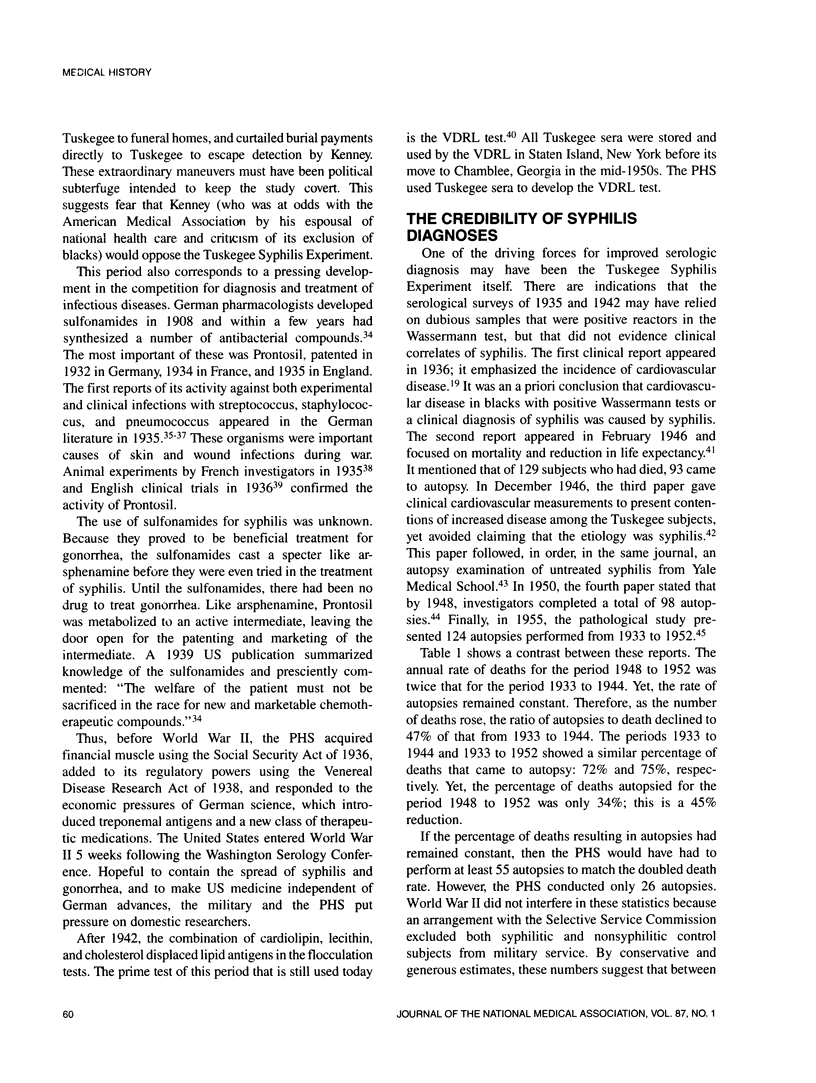
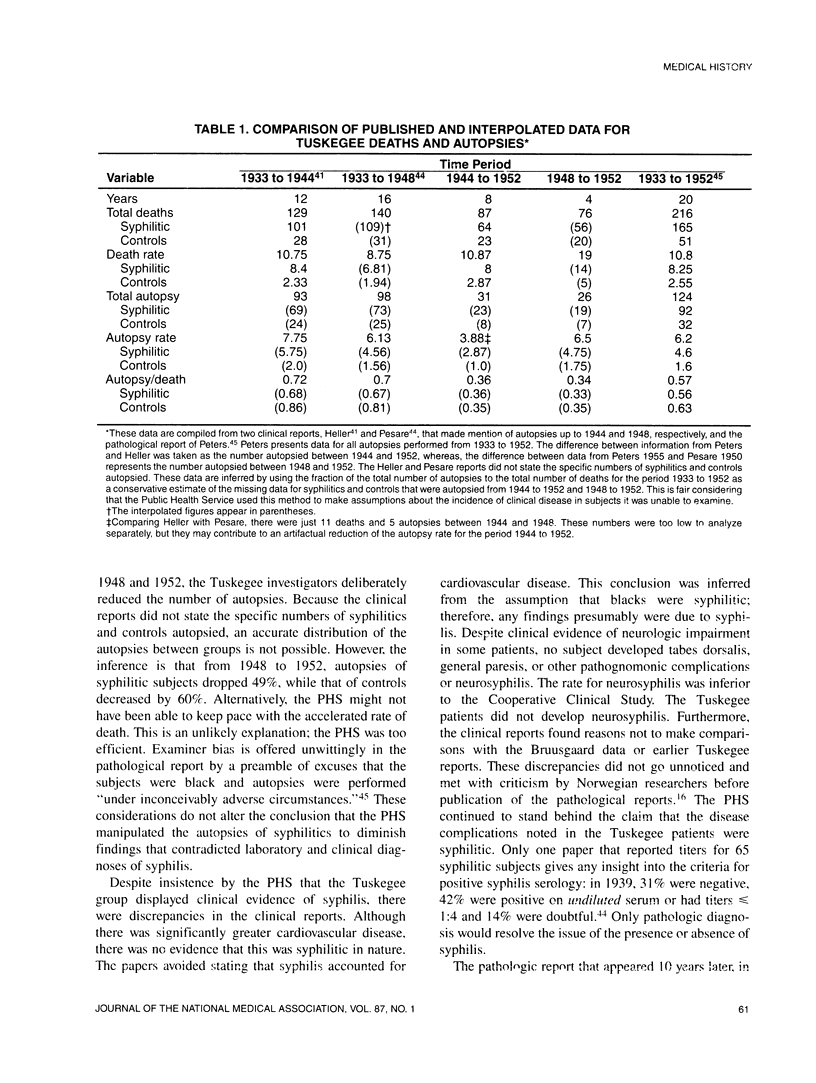
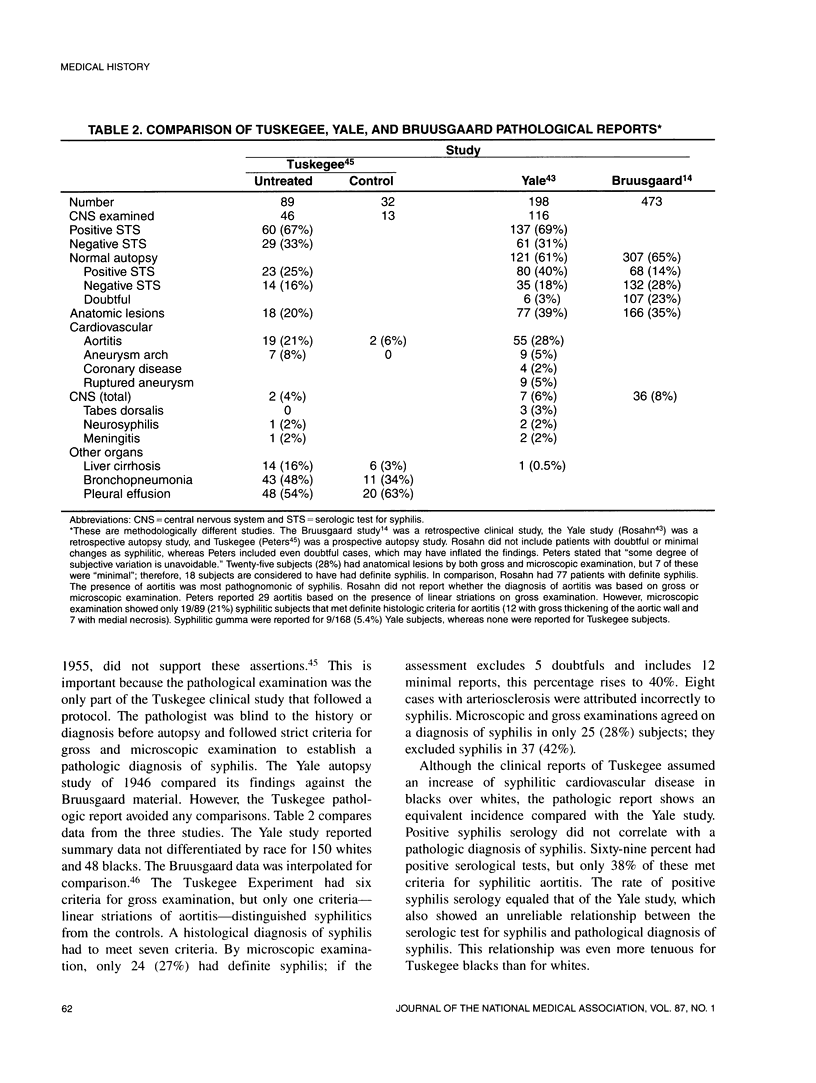
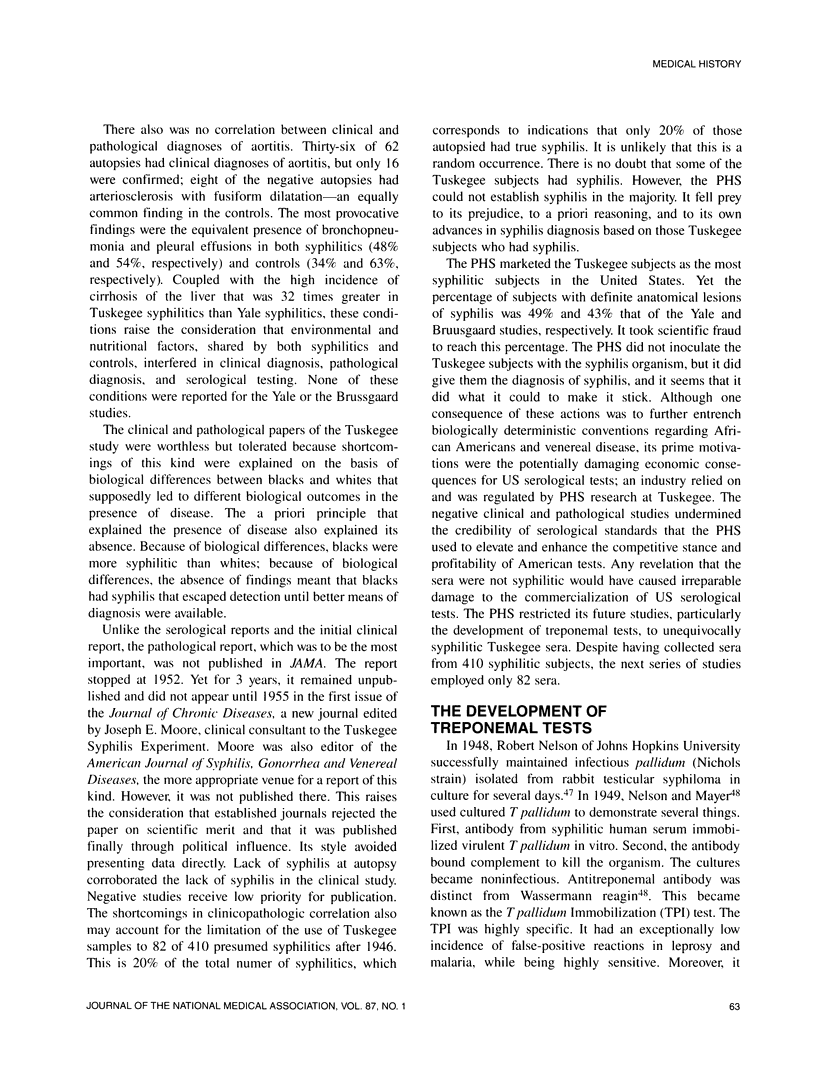
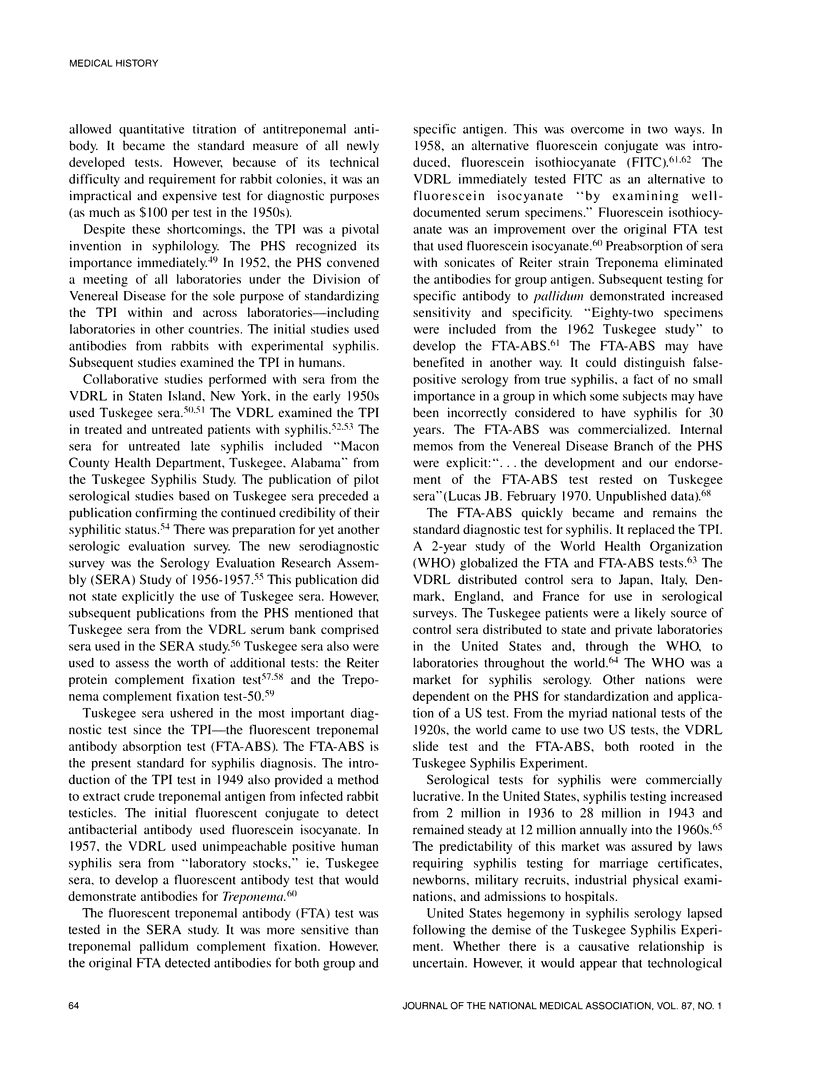
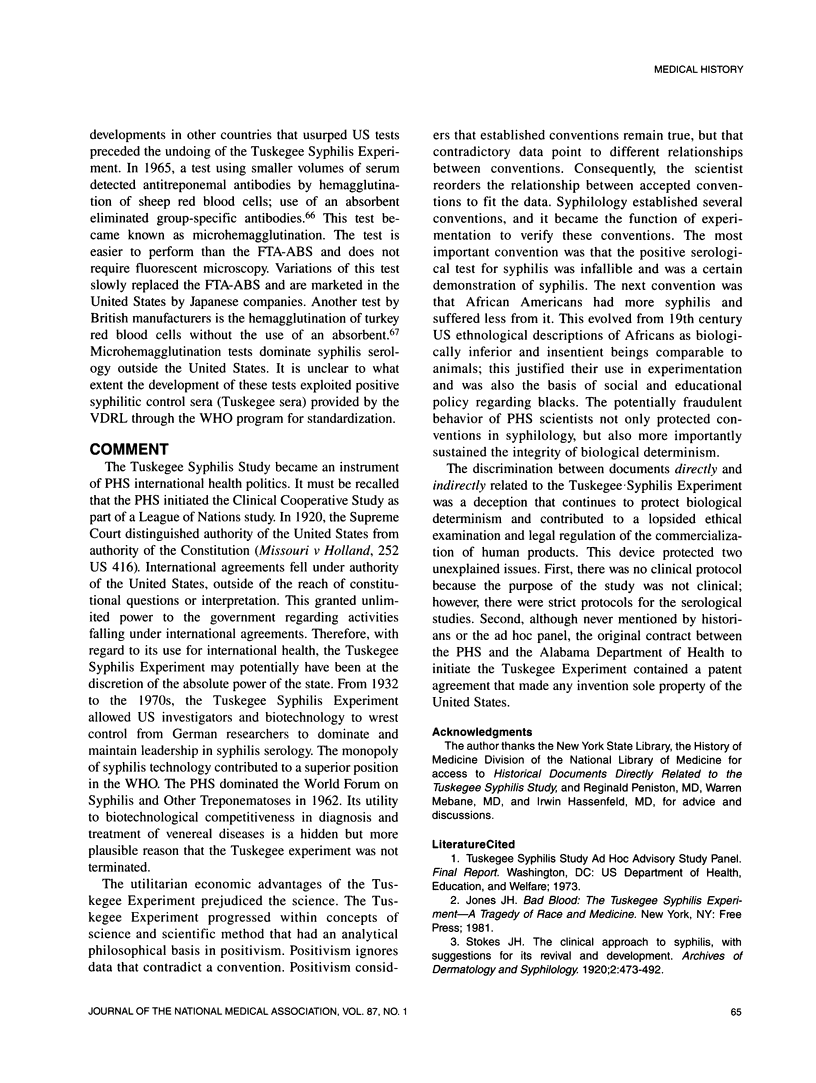

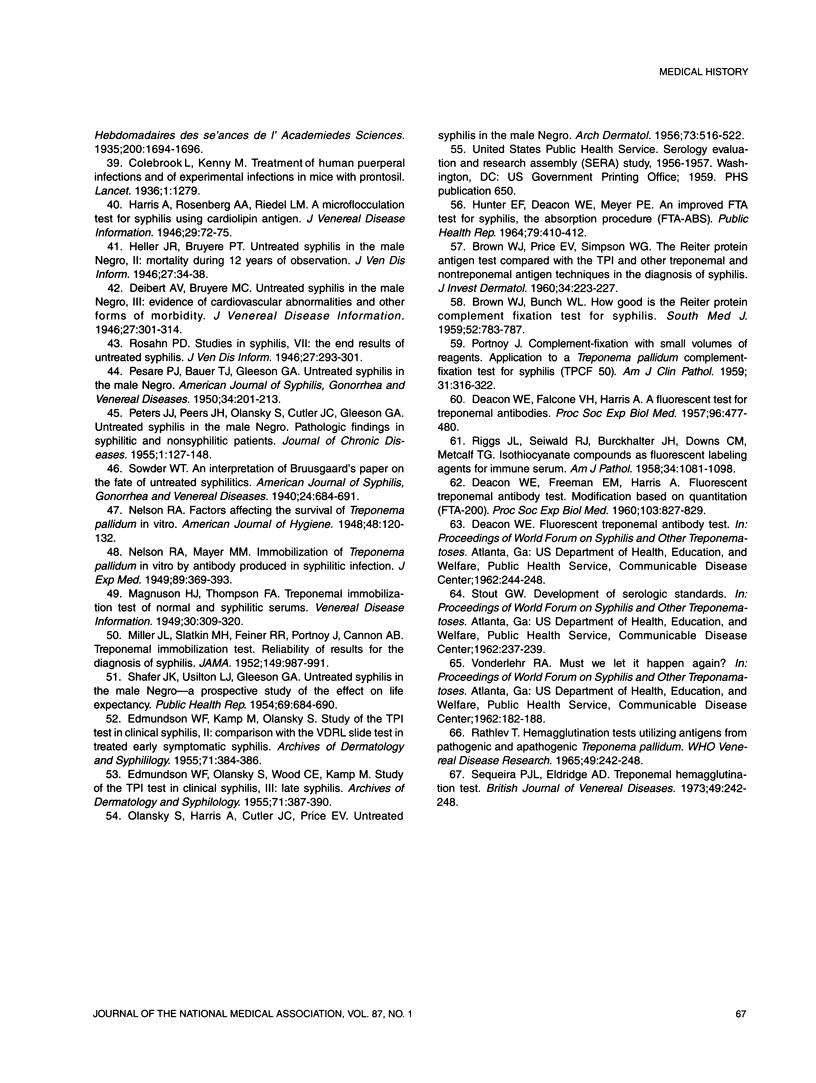
Selected References
These references are in PubMed. This may not be the complete list of references from this article.
- BROWN W. J., BUNCH W. L., Jr How good is the Reiter protein complement fixation test for syphilis. South Med J. 1959 Jul;52(7):783–787. doi: 10.1097/00007611-195907000-00004. [DOI] [PubMed] [Google Scholar]
- BROWN W. J., PRICE E. V., SIMPSON W. G. The Reiter protein antigen test compared with the TPI and other treponemal and nontreponemal antigen technics in the diagnosis of syphilis. J Invest Dermatol. 1960 Mar;34:223–227. doi: 10.1038/jid.1960.34. [DOI] [PubMed] [Google Scholar]
- Burney L. E., Mays J. R., Iskrant A. P. Results of Serologic Tests for Syphilis in Non-syphilitic Persons Inoculated with Malaria. Am J Public Health Nations Health. 1942 Jan;32(1):39–47. doi: 10.2105/ajph.32.1.39. [DOI] [PMC free article] [PubMed] [Google Scholar]
- DEACON W. E., FALCONE V. H., HARRIS A. A fluorescent test for treponemal antibodies. Proc Soc Exp Biol Med. 1957 Nov;96(2):477–480. doi: 10.3181/00379727-96-23512. [DOI] [PubMed] [Google Scholar]
- DEACON W. E., FREEMAN E. M., HARRIS A. Fluorescent treponemal antibody test. Modification based on quantitation (FTA-200). Proc Soc Exp Biol Med. 1960 Apr;103:827–829. doi: 10.3181/00379727-103-25685. [DOI] [PubMed] [Google Scholar]
- EDMUNDSON W. F., KAMP M., OLANSKY S. Study of the TPI test in clinical syphilis. II. Comparison with the VDRL slide test in treated early symptomatic syphilis. AMA Arch Derm. 1955 Mar;71(3):384–386. doi: 10.1001/archderm.1955.01540270096016. [DOI] [PubMed] [Google Scholar]
- EDMUNDSON W. F., OLANSKY S., WOOD C. E., KAMP M. Study of the TPI test in clinical syphilis. AMA Arch Derm. 1955 Mar;71(3):387–390. doi: 10.1001/archderm.1955.01540270099017. [DOI] [PubMed] [Google Scholar]
- HUNTER E. F., DEACON W. E., MEYER P. E. AN IMPROVED FTA TEST FOR SYPHILIS, THE ABSORPTION PROCEDURE (FTA-ABS). Public Health Rep. 1964 May;79:410–412. [PMC free article] [PubMed] [Google Scholar]
- MAGNUSON H. J., THOMPSON F. A., Jr Treponemal immobilization test of normal and syphilitic serums. J Vener Dis Inf. 1949 Nov;30(11):309–320. [PubMed] [Google Scholar]
- MILLER J. L., SLATKIN M. H., FEINER R. R., PORTNOY J., CANNON A. B. Treponemal immobilization test; reliability of results for the diagnosis of syphilis. J Am Med Assoc. 1952 Jul 12;149(11):987–991. doi: 10.1001/jama.1952.02930280009003. [DOI] [PubMed] [Google Scholar]
- NELSON R. A., Jr Factors affecting the survival of Treponema pallidum in vitro. Am J Hyg. 1948 Jul;48(1):120–132. doi: 10.1093/oxfordjournals.aje.a119217. [DOI] [PubMed] [Google Scholar]
- NELSON R. A., Jr, MAYER M. M. Immobilization of Treponema pallidum in vitro by antibody produced in syphilitic infection. J Exp Med. 1949 Apr 1;89(4):369–393. doi: 10.1084/jem.89.4.369. [DOI] [PMC free article] [PubMed] [Google Scholar]
- OLANSKY S., HARRIS A., CUTLER J. C., PRICE E. V. Untreated syphilis in the male Negro; twenty-two years of serologic observation in a selected syphilis study group. AMA Arch Derm. 1956 May;73(5):516–522. doi: 10.1001/archderm.1956.01550050094017. [DOI] [PubMed] [Google Scholar]
- OLANSKY S., HARRIS A., CUTLER J. C., PRICE E. V. Untreated syphilis in the male Negro; twenty-two years of serologic observation in a selected syphilis study group. AMA Arch Derm. 1956 May;73(5):516–522. doi: 10.1001/archderm.1956.01550050094017. [DOI] [PubMed] [Google Scholar]
- OLANSKY S., HARRIS A., HILL J. H. A preliminary study of apparent biological flase positive reactions in four serological tests for syphilis, and the treponemal immobilization test. Am J Syph Gonorrhea Vener Dis. 1953 Jan;37(1):23–28. [PubMed] [Google Scholar]
- PESARE P. J., BAUER T. J., GLEESON G. A. Untreated syphilis in the male Negro; observation of abnormalities over 16 years. Am J Syph Gonorrhea Vener Dis. 1950 May;34(3):201–213. [PubMed] [Google Scholar]
- PETERS J. J., PEERS J. H., OLANSKY S., CUTLER J. C., GLEESON G. A. Untreated syphilis in the male Negro; pathologic findings in syphilitic and nonsyphilitic patients. J Chronic Dis. 1955 Feb;1(2):127–148. doi: 10.1016/0021-9681(55)90204-6. [DOI] [PubMed] [Google Scholar]
- PORTNOY J. Complement-fixation with small volumes of reagents; application to a Treponema pallidum complement-fixation test for syphilis (tpcf 50). Am J Clin Pathol. 1959 Apr;31(4):316–322. doi: 10.1093/ajcp/31.4.316. [DOI] [PubMed] [Google Scholar]
- Parran T., Hazen H. H., Sanford A. H., Senear F. E., Simpson W. M., Vonderlehr R. A. Efficiency of State and Local Laboratories in the Performance of Serodiagnostic Tests for Syphilis. Am J Public Health Nations Health. 1937 Jan;27(1):15–23. doi: 10.2105/ajph.27.1.15. [DOI] [PMC free article] [PubMed] [Google Scholar]
- RIGGS J. L., SEIWALD R. J., BURCKHALTER J. H., DOWNS C. M., METCALF T. G. Isothiocyanate compounds as fluorescent labeling agents for immune serum. Am J Pathol. 1958 Nov-Dec;34(6):1081–1097. [PMC free article] [PubMed] [Google Scholar]
- SCHUMAN S. H., OLANSKY S., RIVERS E., SMITH C. A., RAMBO D. S. Untreated syphilis in the male negro; background and current status of patients in the Tuskegee study. J Chronic Dis. 1955 Nov;2(5):543–558. doi: 10.1016/0021-9681(55)90153-3. [DOI] [PubMed] [Google Scholar]
- SHAFER J. K., USILTON L. J., GLEESON G. A. Untreated syphilis in the male Negro; a prospective study of the effect on life expectancy. Public Health Rep. 1954 Jul;69(7):684–690. [PMC free article] [PubMed] [Google Scholar]
- Sequeira P. J., Eldridge A. E. Treponemal haemagglutination test. Br J Vener Dis. 1973 Jun;49(3):242–248. doi: 10.1136/sti.49.3.242. [DOI] [PMC free article] [PubMed] [Google Scholar]
- Wile U. J. EXPERIMENTAL SYPHILIS IN THE RABBIT PRODUCED BY THE BRAIN SUBSTANCE OF THE LIVING PARETIC. J Exp Med. 1916 Feb 1;23(2):199–202. doi: 10.1084/jem.23.2.199. [DOI] [PMC free article] [PubMed] [Google Scholar]


